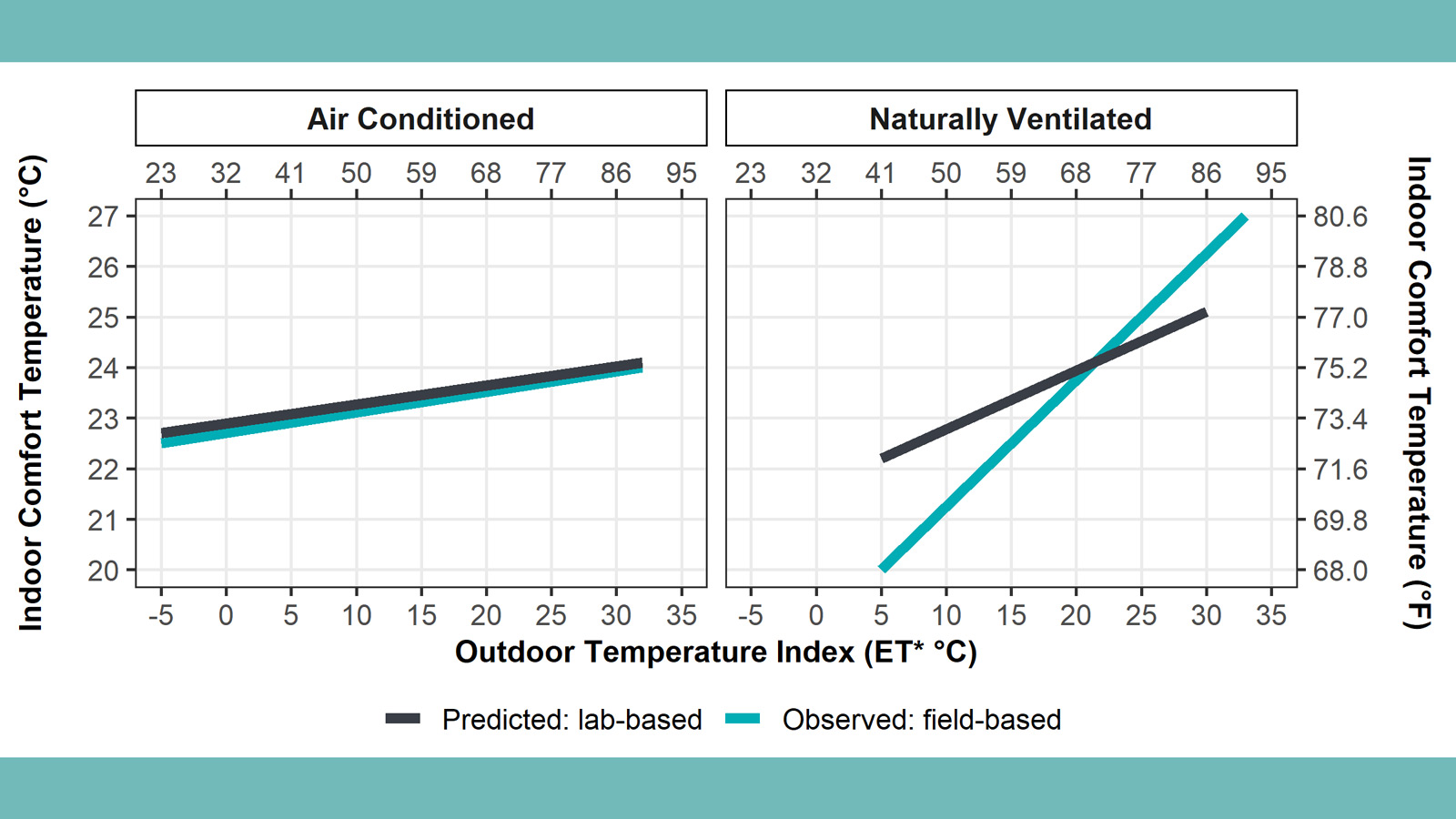A standard for thermal comfort in naturally ventilated buildings included in ASHRAE Standard 55.
Status: Completed
Funding Sources: ASHRAE 884-RP
Project Objective
Examine the applicability of Fanger’s predicted mean vote (PMV) model in naturally ventilated buildings, and develop an adaptive comfort model based on world-wide field data.
Project Results
The results of this research form the basis of the Adaptive Comfort Model that was adopted in the 2004 version of the ASHRAE Standard 55.
The Adaptive Comfort Model has become the global standard for designing and operating naturally-ventilated buildings and has led to energy savings worldwide.
Significance to Industry
It was previously very difficult for a naturally ventilated building to stay within the narrow comfort range prescribed by ASHRAE 55, which is based on controlled settings in laboratory conditions that are not representative of many environments in real buildings, especially those with operable windows. By creating an alternative comfort model more applicable to these buildings, designers have greater flexibility to design buildings with operable windows that could both enhance comfort and reduce energy use.
Research Approach
This research was based on analysis of 21,000 sets of data compiled from thermal comfort field studies conducted in 160 buildings located on four continents in varied climate zones. Detailed physical measurements, along with responses to questions about thermal sensation, acceptability, and preference were analyzed to determine the relationship between optimum indoor temperature and outdoor temperature.
In sealed, mechanically cooled buildings, optimum indoor temperature tracks outdoor temperature very slightly, but this can be explained purely by the clothing level variable in the lab-based PMV model. In naturally ventilated buildings, optimum indoor temperature is more strongly dependent on outdoor temperature. People accept and even prefer a wider range of temperatures than can be explained by the PMV model. This difference is explained by psychological and behavioral adaptation.
Publications and Reports
Brager, G., and R.J. de Dear, 2000. A Standard for Natural Ventilation. ASHRAE Journal, October.
Brager, G.S., and R.J. de Dear, 2001. Climate, Comfort & Natural Ventilation: A new adaptive comfort standard for ASHRAE Standard 55. Proceedings, Moving Thermal Comfort Standards into the 21st Century, Windsor, UK, April 2001.
de Dear, R. and G. Brager, 1998. Developing an adaptive model of thermal comfort and preference. ASHRAE Transactions, 104 (1): 145-167.
de Dear, R. and G. Brager, 2001. The adaptive model of thermal and energy conservation in the built environment. International Journal of Biometeorology, 45 (2): 100-108.
de Dear, R. and G. Brager, 2002. Thermal comfort in naturally ventilated buildings. Energy and Buildings, 34: 549-561.

